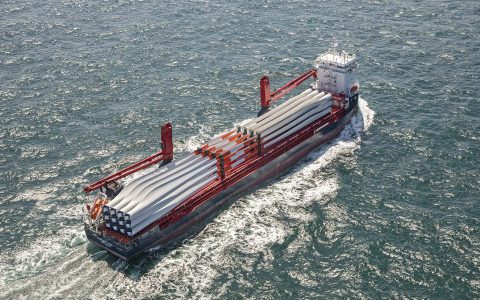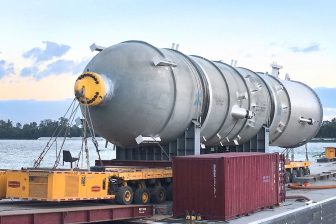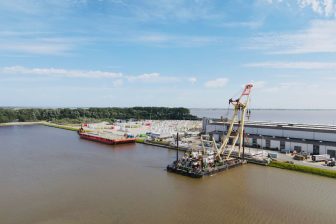
Eefting Energy tech ordered for Symphony’s project cargo newbuilds
Eefting Energy has been hired to install and commission its fuel efficiency monitoring systems and bunker meters on two project cargo vessels Ferus Smit Shipyards is building for Symphony Shipping. The new vessels are scheduled for delivery at the end of 2022 or early 2023.
The company will install and commission its systems on two Ecobox project cargo vessels. It will also install bunker meters on both vessels. By adding these meters and thus also measuring the fuel entering the ship, Eefting Energy notes that it can keep track of what remains onboard much better.
And since there are often differences in the quantity specified by the bunker supplier and what is measured, Eefting can now control this with these calibrated Bunker Flow Meters.
Symphony’s cooperation with Ferus Smit
Breda-based shipping company, Symphony Shipping has placed an order with Ferus Smit Shipyards for the construction of two new Ecobox XL project cargo vessels in March last year. The ships will be an evolution of the successful Ecobox and Ecobox DP series that the yard already delivered to Symphony over the recent years.
The cooperation between Symphony and Ferus Smit started in 2013 with the jointly development and building of six Ecobox ships. This first series comprised a 10.500 dwt geared cargo vessel with one single fully box shaped hold. The ships have the open top notation, with a deckhouse placed forward to give shelter to the hold and deck cargoes against severe weather conditions, and enabling oversize deck cargoes to be loaded over the stern. Later also a dynamic positioning version of the design was developed as Ecobox DP, of which two more ships were delivered to Symphony.
New Ecobox XL project cargo vessel design
The new Ecobox XL design will have its focus on loading extra long items, such as windmill blades, while at the same time still maintaining good capabilities as a normal general cargo ship. The modifications in design and systems are also aimed to further enhance her green performance with a reduction of her EEDI-score to a new class reference standard.
Therefore the original ecobox design will be lengthened by more than 21 meters, extending her box shaped hold to more than 100 meters in length on the tanktop, and 112 meters above the movable tweendeck level.
The new ships will be 18 meters wide, enhancing her cargo deadweight further, and maintaining here flexibility of loading while keeping a very low resistance on both flat water and in waves.
Fuel consumption will be further reduced by integrating a novel ORC waste heat generator in the propulsion system. This system further consists of a 3300 kW main engine driving a nozzled controllable pitch propeller running in fully automatic combinator mode. The fuel system will also be suitable for bio blend fuels.



